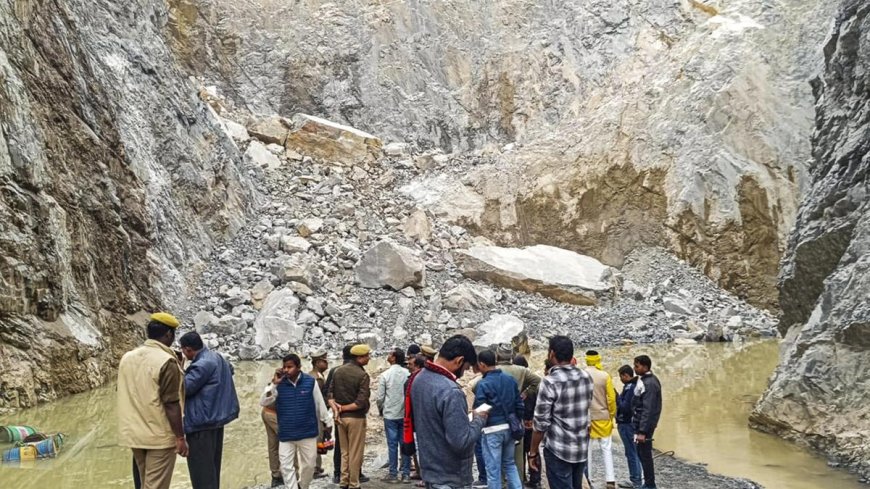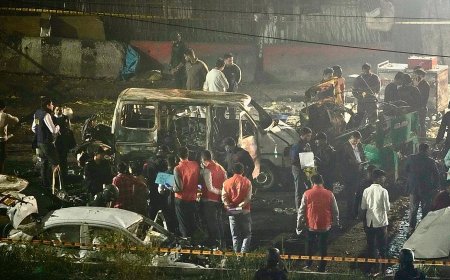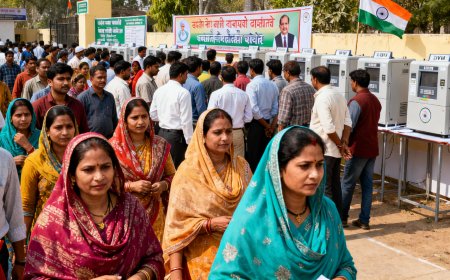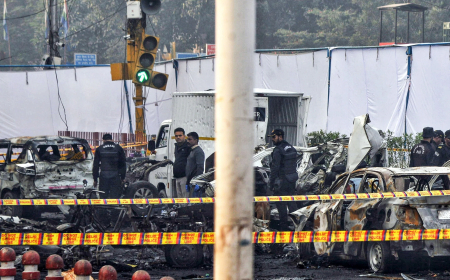UP Stone Quarry Collapse: Growing Fears Over Worker Safety and Oversight in India’s Mining Belt
A deadly quarry collapse in Uttar Pradesh raises urgent concerns over safety standards, unchecked operations, and hazardous working conditions in India’s mining zones.

The recent stone quarry collapse in Uttar Pradesh has once again exposed the fragile ecosystem of India’s mining regions, where backbreaking labor meets high risk and minimal protective measures. The disaster, which trapped several workers beneath massive layers of loose earth and shattered stone, has sparked outrage, questions, and renewed calls for urgent safety reform. While authorities continue rescue and recovery efforts, locals and labor rights watchers say such accidents are not isolated — they are symptoms of a larger, systemic failure.
A Sudden Crash That Took Lives by Surprise
Witnesses from the nearby settlement reported hearing a thunderous crack followed by clouds of dust rising above the quarry walls, triggering panic among workers and families. Some survivors narrated that moments before the collapse, minor cracks were visible but were dismissed as routine. Workers continued their tasks with handheld tools, unaware that the ground beneath was shifting.
Construction equipment, fire personnel, disaster response teams, and local administration rushed to the site, but the uneven terrain slowed operations. The intense search continued late into the night as families waited anxiously, hoping someone would emerge alive.
Mining Belt Pressure and Risk Culture
Uttar Pradesh, along with parts of Rajasthan, Jharkhand, and Chhattisgarh, forms one of India’s busy stone mining belts, supplying raw materials to construction and real-estate projects across the country. Demand has been rising, but worker safety standards have not kept pace.
According to workers and activists, many quarry sites run with temporary labor, often without formal safety training, emergency plans, or modern equipment. Helmets, harnesses, and dust control systems are still considered optional rather than mandatory.
A labor union representative stated that small contractors sometimes prioritize speed and output, encouraging workers to tackle risky edges, vertical cuts, and unstable rock faces. This culture of pushing boundaries, coupled with lack of technical supervision, turns each shift into a gamble.
Legal Rules Exist — Enforcement Does Not
India’s Mines Act and labor safety rules lay out strict operational requirements, including routine inspections, controlled blasting, slope stability checks, and first-aid readiness. However, enforcement across informal mining clusters remains inconsistent.
In some areas, paperwork passes inspections even if physical conditions do not. Licensing bottlenecks and local political networks have also been blamed for weak oversight. Quarry workers often hesitate to raise complaints due to fear of job loss, delayed payment, or intimidation.
Experts say that strict audits, surprise inspections, digital tracking of licenses, and public-record safety ratings could dramatically lower risks.
Human Cost: Not Just Lives Lost, But Futures Halted
Many laborers in quarries come from financially stressed backgrounds. Their families depend heavily on daily wages, which means an injury or fatality is not just a personal loss — it triggers long-term poverty. Children may drop out of school, women take on debt, and families sometimes relocate in search of new wage opportunities.
Following the collapse, volunteers reported emotional breakdowns among wives and elderly parents, many of whom still do not know whether their loved one is alive, injured, or missing.
Why This Tragedy Must Become a Turning Point
If the mining industry is expected to support infrastructure development, it must also uphold value for human life. The tragedy could serve as an awakening for policymakers and local authorities to:
-
Introduce mandatory digital safety compliance logs
-
Install real-time geological and vibration sensors
-
Provide formal safety training and certification
-
Ensure compulsory insurance coverage for laborers
-
Bring heavy penalties for illegal or unsafe operations
Mining does not need to be synonymous with danger. Countries like Australia and Canada have proven that strict oversight and advanced training save lives while maintaining productivity.
Conclusion
The UP quarry collapse is a painful reminder that progress cannot come at the cost of human dignity. Though the investigation continues, one fact is already clear — every accident reflects gaps that could have been prevented. Until the mining sector embraces modern safety planning, transparency, and accountability, thousands of workers across India’s mining belt will continue to face unseen dangers daily.
India’s growth story must include its workers. Protecting them is not charity — it is responsibility.
What's Your Reaction?
 Like
0
Like
0
 Dislike
0
Dislike
0
 Love
0
Love
0
 Funny
0
Funny
0
 Angry
0
Angry
0
 Sad
0
Sad
0
 Wow
0
Wow
0























